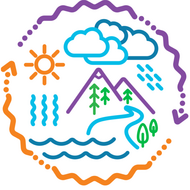
(View Complete Item Description)
This OSPI resource provides curated collections of free activities, lessons, units, and informational "texts" (articles, passages, e-books, videos, podcasts) to support every NGSS Performance Expectation (standard) in grades K-5. This resource is intended to support teachers with teaching science while also integrating science and ELA to grow student knowledge, thinking, application, and skills in both content areas. Materials are organized into units based on the topics and essential questions in each grade. Resources listed are all freely available online, with some requiring teachers to create free accounts to access. Some trade books are also listed that might be accessed through a library system. Gratitude is expressed to the Washington State Science Fellows, Science Fellows Emeriti, and ELA Fellows who contributed to curating the informational texts. For questions or comments contact OSPI Elementary Science at Kimberley.Astle@k12.wa.us.
Material Type:
Activity/Lab,
Assessment,
Diagram/Illustration,
Full Course,
Homework/Assignment,
Interactive,
Lesson,
Lesson Plan,
Primary Source,
Reading,
Simulation,
Teaching/Learning Strategy,
Textbook
Author:
Kimberley Astle









